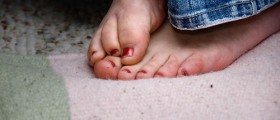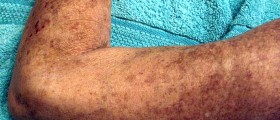
A person who is exposed to extreme cold risks his or her skin freezing and damage to the blood vessels. In these cold temperatures the blood flow stops and that is when the tissue may die or get infected. In most cases people suffer from gangrene. That is why it is essential that a person re-warms the skin quickly to avoid that. In most cases it is the nose, ears, hands and feet that suffer from frostbite. It is not uncommon for the frostbite to be accompanied with hypothermia. In these cases a person should first attend to hypothermia because it is life-threatening. Frostbite does not occur that often. However, people who are exposed to cold temperatures all the time, people who do winter camping, high-altitude climbing, hunting and snowmobiling are faced with this problem quite often. Apart from frostbite, a person who is exposed to extremely cold weather may end up suffering from frostnip. This is a superficial freezing of the outer layer of the skin. The skin of the person will become white and quite painful because of the poor blood circulation.
Causes and risk factors of frostbite
A person who spends a long time being exposed to the temperature less than 32 degrees, risks getting frostbite. The risk is even greater with lower temperatures and a stronger wind. People with diabetes or peripheral vascular disease have a greater chance of suffering from frostbite due to impaired circulation.
Symptoms of frostbite
The most common symptoms of frostbite and those who are experienced first are numbness and loss of sensitivity to touch. However, once the condition is worse, the pain will fade or disappear entirely. The skin will change color when a person is experiencing frostbite. At first it will first become blanched and then it will become red and in the end white-purple. Frostbite can attack any part of the body but it is mostly the nose, ears, fingertips and toes which are hit by frostbite. Mild cases of frostbite can be cured entirely but severe ones will end with an infection or gangrene.
Treatment of frostbite
At first signs of frostbite a person should go where it is warm and re-warm the affected parts of the body. Rubbing the skin should be avoided because a person will only further damage the already damaged tissue. It is best that a person places the frostbitten part of the body in a bath kept at a temperature of 104 degrees F for about 60 minutes. In order to ease the pain a person can take ibuprofen. Going to the hospital, if possible, is the best solution.
Prevention of frostbite
Before going out to extreme cold weather, a person should apply moisturizer to all exposed body parts. Dressing warmly is essential. Mittens are better option than gloves.

















Your thoughts on this
Loading...